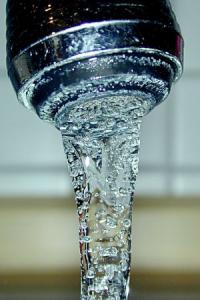
The good news is that, yes, fracking can be made safe and clean, according to a new analysis by the International Energy Agency (IEA). But the down side is that it will also take tougher regulations to make producers to apply the latest technologies. The entire report, Golden Rules for a Golden Age of Gas is available here. (See page 9 for a summary of findings.)
Water consumption
Energy companies have come under great pressure because of the enormous water consumption fracking requires. According to a report in Technology Review this morning, fracking requires sending roughly 20 million liters of water at high pressure down each well to create fractures in rock formations to free natural gas. It also points out that a number of shale-gas areas are drought-prone, such as Texas and some parts of China.
Dealing with air and water pollution
Beyond water consumption, various types of pollution have caused more concern in the press. Fracking can potentially contaminate drinking water and contribute to air pollution. Some also voice concerns over the practice's likelihood of increasing greehouse-gas emissions, due to methane leaks.
The report concludes that in most cases, drinking water is not contaminated by methane and that preventing the fractures that cause drinking water pollution is relatively easy. However, the proximity of gas deposits and aquifers can make all the difference, and the IEA report suggests potentially banning fracking in areas where there is not sufficient distance between the two.
Chemical additives and wastewater

The chemicals added to water in the fracking process have also caused great concern for environmentalists and those living in fracking areas. The greatest issue, according to Technology Review, is when these chemicals are being handled in concentrated form, not when they are diluted in water. High concentration surface spills that can occur during handling are the greatest risk, as they can make their way into water sources.
The last major issue is the wastewater. Once the fracking water has been forced through the well, it returns to the surface with chemical additives as well as a number of other naturally occurring chemicals, including heavy metals even potentially radioactive materials. This process also forces methane to the surface, which is a far more powerful greenhouse gas than CO2. Currently, the report notes, there are technologies available or under development to deal with these risks. For example, there is currently simple technology available for capturing methane, but not all companies are using it.
As is often the case, science presents us with the answers, but it may take regulatory action to put the appropriate technology in place. While the report concludes that regulation is the answer, it also estimates that making fracturing safe through the use of additional technology and safer practices would only raise the price of fracking at an average well by 7%--a fairly modest hike for a safe source of much needed natural gas.


